
Dual Stage Rotary Vane Pumps
The VD Series dual stage, oil rotary vacuum pumps are available in pumping speeds from 600 - 800 l/min. They're lightweight and feature low noise with minimal vibration levels.
Learn More.
|
 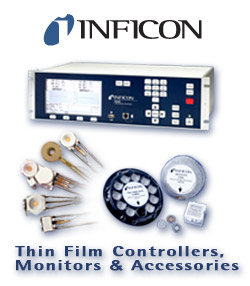
INFICON thin film deposition controllers, monitors and accessories, including customizable sensors and feedthroughs, offer features, function and value targeted to your application. View our catalog and contact us today! |
 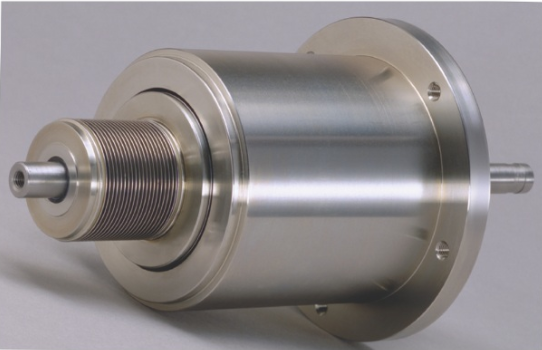
Custom Feedthrough Assemblies
Rigaku offers custom-engineered solutions from simple feedthroughs to feedback controlled subsystems for managing motion. This includes function-enhanced products and clean/vacuum magnetic rotary seals for robots. Learn More.
Rigaku Vacuum Products
E-mail: vacuum-info@rigaku.com
Phone: 603-890-6001
|

Reliable Handling in Large Surface Processes with Comdel's
ESC-HV Power
Comdel's latest electrostatic chuck power supply can be configured to deliver from 5 to 10KV of power for reliable handling in large surface processes. Learn More.
Comdel
11 Kondelin Road
Gloucester, MA 01930
Tel: 978-282-0620 or 800-468-3144
Fax: 978-282-4980
www.comdel.com
info@comdel.com
|
 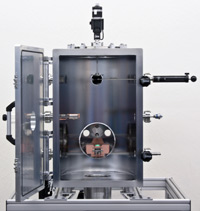
MDC's Bundled Engineered Solutions
MDC offers virtually every component required for vacuum coating applications. With MDC's standard chamber line you have the advantage of bundling these high quality pieces together without hours or weeks of special engineering. More...
MDC
engineered process solutions
www.mdcvacuum.com
|

From AR Coatings to Notch Filters, and from TCOs to DBRs, Evatec offers customized coating platforms and complete process solutions based on enhanced evaporation and sputter.
Phone: (603) 669-9656
www.evatecnet.com
E-Mail:infoNA@evatecnet.com
|
Measure Thin Film Deposition
with DektakXTTM
Bruker's new DektakXTTM stylus profiler monitors thin film deposition and etch systems with the industry's best measurement repeatability (<5Å). Find out how to better control your thin film process development faster, easier and more accurately. Learn More.
Bruker Corporation
520-741-1044
productinfo@bruker-nano.com
|
  Rectangular Port Vacuum Valves Rectangular Port Vacuum Valves
Ports to 200 X 1400 mm; 8 X 55 inch.
Aluminum, Steel or Stainless Steel.
(RoHS) 2002/95/EC Compliant.
Auto Close or Open on Power Fail.
NW and ISO Gauge & Roughing Ports.
Vacuum Research Corporation Phone: 800/426-9340
Web: www.vacuumresearch.com
E-Mail: vrc@vacuumresearch.com
|
 
Dynavac's 1-meter Optical Coating System is a cost-effective tool for producing high-quality precision optics. Its versatile design supports a wide range of process options including IAD, and the split-cylinder chamber provides easy maintenance while minimizing footprint. System interface and control is simple and supports download capability from most thin film design packages.
Telephone: 781-740-8600
|
|
New Print Catalog Available from
UC Components Inc.
www.uccomponents.com
|
 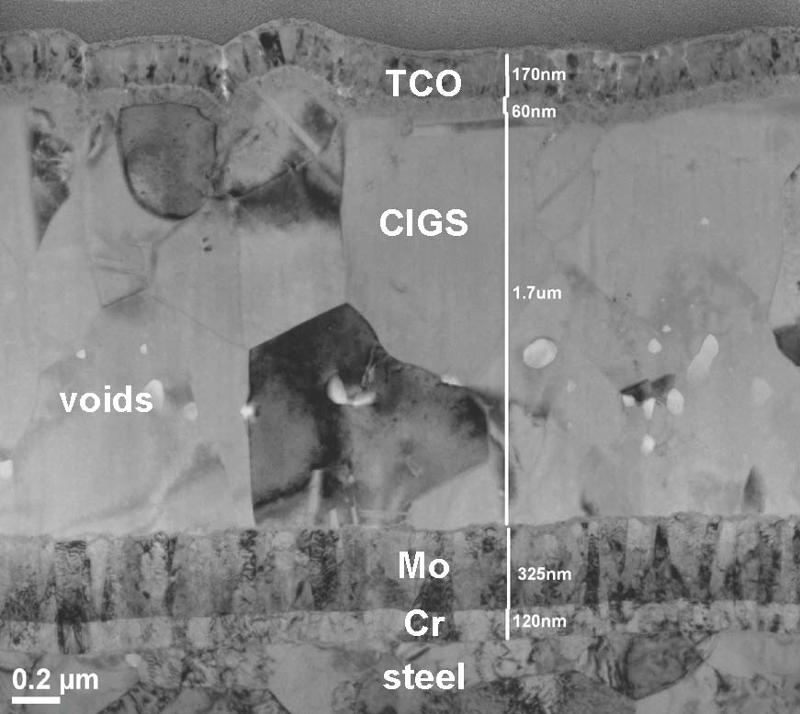
Evans Analytical Group (EAG) is the leading global provider of high quality surface analysis and materials characterization services to the films and coatings industry.
Evans Analytical Group
1.800.366.3867
|
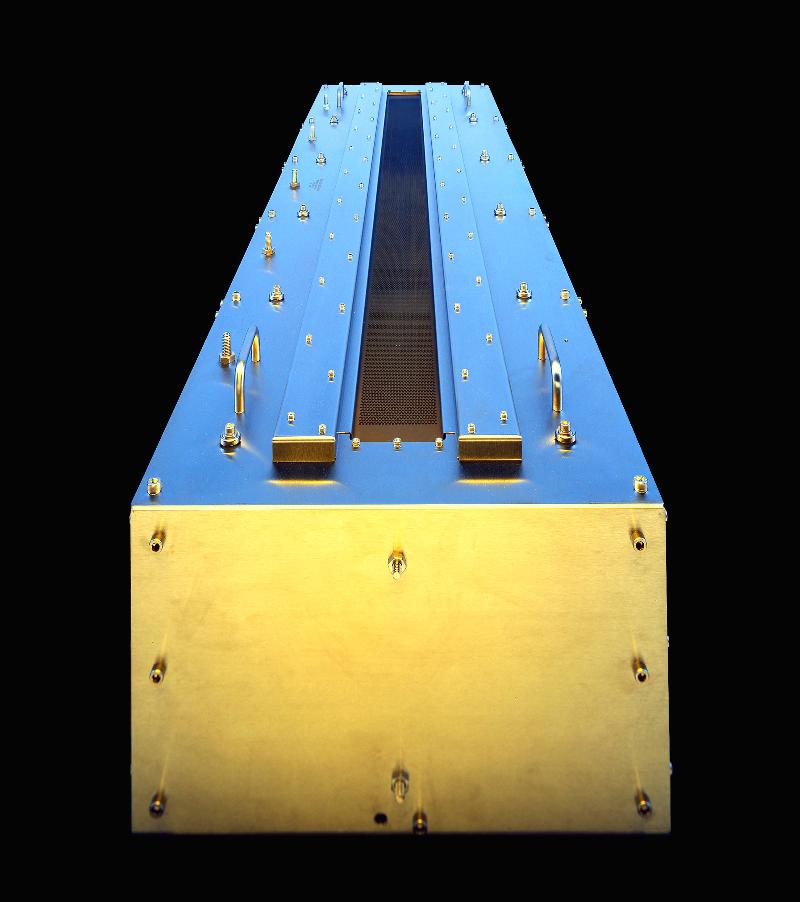 
Veeco provides RF Linear Ion Sources for medium and large scale substrates featuring a broad power range and patented technology that provides reliability and performance.
To Learn More Visit:
www.veeco.com
970-221-1807
|
 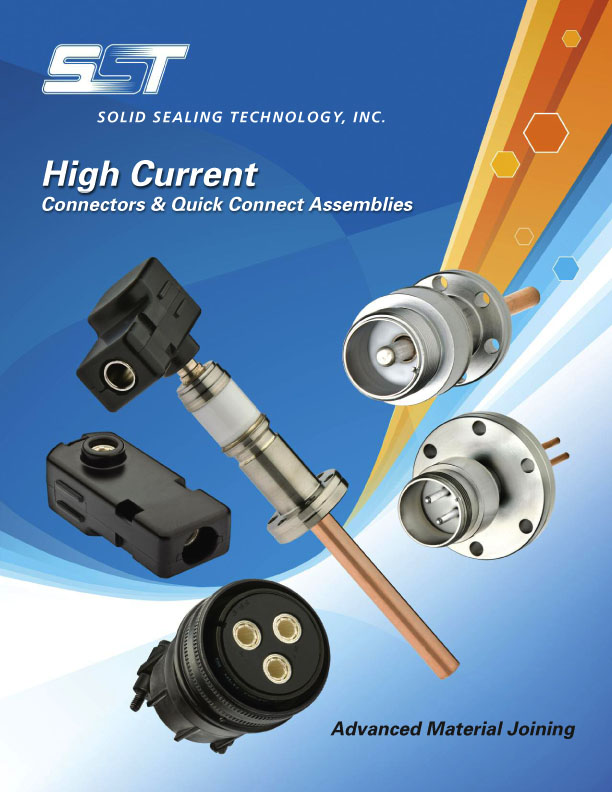
Solid Sealing Technology designs and manufactures hermetic assemblies using metalizing, brazing and glass-ceramic sealing including standard and custom Feedthroughs/Connectors for extreme environments and UHV.
Contact:
Ph: 518-874-3600
Fax: 518-874-3610
info@solidsealing.com
|
 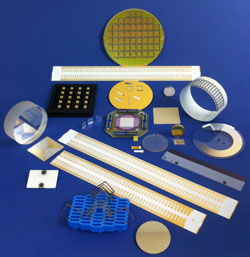
Thin-Films Research is prepared to meet your custom thin-film coating requirements. Using state-of-the-art equipment and over 40 years of experience, Thin-Films Research offers technology for the electro-optics, semiconductors, sensors & medical electronic industries. Learn More
Thin-Films Research, Inc.
270 Littleton Road
Westford, MA 01886
Phone: 978-692-9530
Fax: 978-692-9531
E-Mail: sales@thinfilmsresearch.com |
 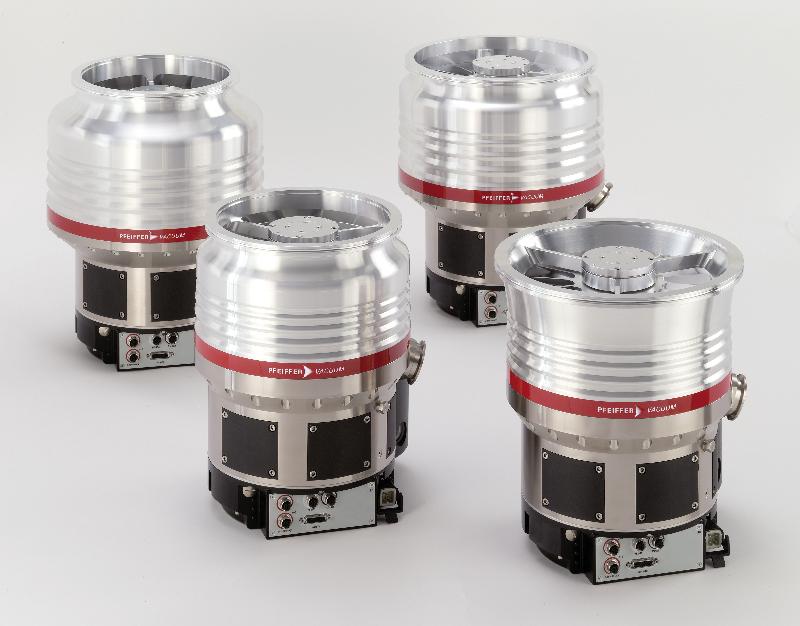
Turbopumps for High Performance and Reliability
HiPaceTM turbopumps, available in pumping speeds from 10 to 3000 l/s, provide high gas throughput, exceptional compression for light gases and reliable operation, even in the harshest coating applications.
Learn More.
Pfeiffer Vacuum, Inc.
24 Trafalgar Square
Nashua, NH 03063-1988
Phone: 603-578-6500
Web site: www.pfeiffer-vacuum.com
hipace@pfeiffer-vacuum.com
|
The Hiden HPR-30 is a residual gas analyser configured for analysis of gases and vapours in vacuum processes and for vacuum diagnostics.
Learn more.
E-mail address: info@hiden.co.uk
Phone: +44 [0] 1925 445225 (UK)
or [1] 734 542 6666 (USA)
Website: www.HidenAnalytical.com
|
 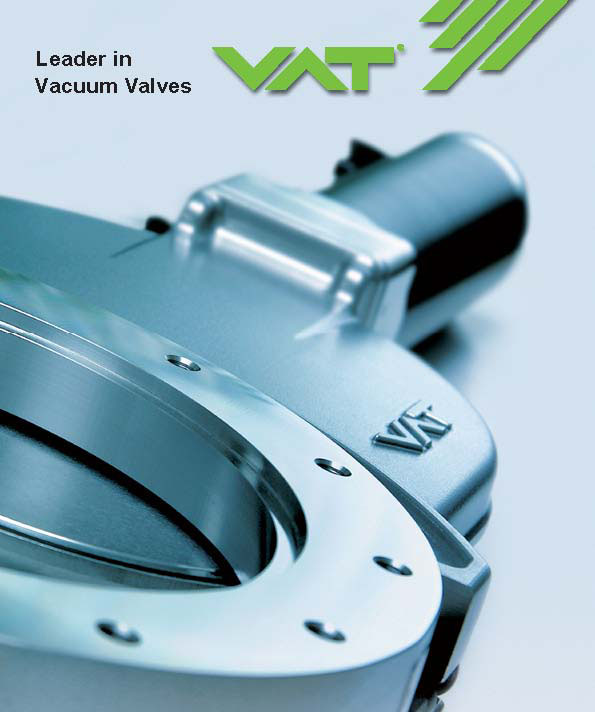
VAT manufactures high quality vacuum valves for a variety of applications. Products include: gate, angle, fast-closing, transfer, pendulum, throttle, pressure control, all-metal and customized valves. Learn more.
Contact Us:
Phone: 781-935-1446
or 800-935-1446
E-Mail: US@vatvalve.com
|
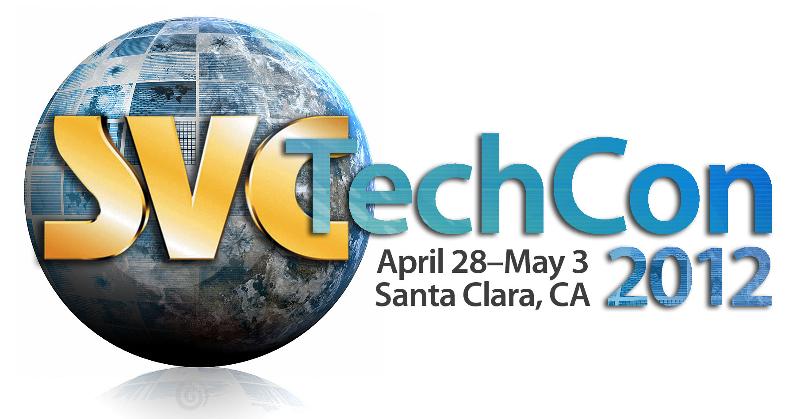
April 28 - May 3, 2012
Santa Clara, California
Technical Program
Exhibit
Education
Networking
Learn More...
|
UPCOMING LIVE WEBINARS
Sputter Deposition
David Glocker, Isoflux Incorporated
Wednesday, February 29, 2012
11:00 a.m. - 2:00 p.m. EST
Basics of Vacuum Web CoatingDonald J. McClure, Acuity ConsultingThursday, June 7, 201211:00 a.m. - 2:00 p.m. EDTON-DEMAND WEBINAR
Practical Aspects of Plasma Modification of Polymer Materials and Plasma Web TreatmentJeremy Grace, Eastman Kodak |
|
|

|
|
Military Laser Technologies Challenge Optical-Coating Manufacturers
|
From Laser Focus World, November 1, 2011, by Trey Turner and Mark Damery, Research Electro-Optics (Colorado): "Optical coatings for military applications present a particularly demanding set of requirements for the thin-film manufacturer, usually revolving around exceptional optical performance in particularly harsh environments. These can include high laser damage threshold, wide angular acceptance, excellent performance at several widely spaced wavelengths, low wavefront distortion, spectral stability in the presence of large swings in temperature and humidity, and good mechanical durability. The single biggest military application for lasers is in rangefinding and target designation.
The exact way that coating specifications are stated can significantly impact production cost. In terms of deposition, there are three basic methods currently in common use: thermal evaporation, ion-assisted deposition (IAD), and ion-beam sputtering (IBS). " A comparison of design and deposition approaches are presented.
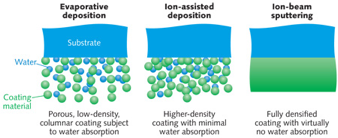 Source: Read the full article... Laser Focus World: http://www.laserfocusworld.com/articles/print/volume-47/issue-11/features/military-laser-technologies-challenge-optical-coating-manufacturers.html Image: Laser Focus World
|
Jumping Droplets Take a Lot of Heat, as Long as it Comes in a Cool Way
|
From Duke University Pratt School of Engineering, December, 12, 2011, by Richard Merritt: "Microscopic water droplets jumping from one surface to another may hold the key to a wide array of more energy efficient products, ranging from large solar panels to compact laptop computers.
Duke University engineers have developed a new way of producing thermal diodes to regulate heat by bleeding it away or keeping it in. The method solves several shortcomings of existing devices.
While thermal diodes can be made from solid materials, these solid-state diodes are not nearly as effective as "phase-change" thermal diodes that rely on vaporization and condensation to transport heat. Existing phase-change diodes can transfer over a hundred times more heat in the forward direction than the reverse, but with major limitations: they are dependent on gravity or restricted to a one-way direction. This limits their use in mobile electronics or solar panels.
The Duke engineers believe they have figured out a way to overcome these limitations by exploiting tiny self-propelled water droplets, or condensate, that can jump from a water-repellent, or superhydrophobic, surface to a highly absorbent, or superhydrophilic, surface, but not the other way around.
The results of the Duke experiments were published online in the journal Applied Physical Letters."
Source: Read the full article...
Duke University: http://www.pratt.duke.edu/node/3199
|
Chalmers Scientists Create Light from Vacuum
|
From Chalmers University of Technology (UK), November 16, 2011: "Scientists at Chalmers have succeeded in creating light from vacuum - observing an effect first predicted over 40 years ago. The results have been published in the journal Nature. In an innovative experiment, the scientists have managed to capture some of the photons that are constantly appearing and disappearing in the vacuum. The experiment is based on one of the most counter-intuitive, yet, one of the most important principles in quantum mechanics: 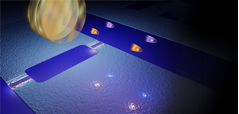 that vacuum is by no means empty nothingness. In fact, the vacuum is full of various particles that are continuously fluctuating in and out of existence. They appear, exist for a brief moment and then disappear again. Since their existence is so fleeting, they are usually referred to as virtual particles. Chalmers scientist, Christopher Wilson and his co-workers have succeeded in getting photons to leave their virtual state and become real photons, i.e. measurable light." that vacuum is by no means empty nothingness. In fact, the vacuum is full of various particles that are continuously fluctuating in and out of existence. They appear, exist for a brief moment and then disappear again. Since their existence is so fleeting, they are usually referred to as virtual particles. Chalmers scientist, Christopher Wilson and his co-workers have succeeded in getting photons to leave their virtual state and become real photons, i.e. measurable light."
Source: Read the full article...
|
|
Graphene Moves Toward Applications
|
From Chemical & Engineering News , November 21, 2011, by Mitch Jacoby: Graphene, "this ultrathin form of carbon - a single atomic layer thick in some cases, a handful of layers in others - has been the focus of an enormous research effort for the past couple of years. 'Graphene products are here today. They're not five years away.' Says John S. Lettow, president of Vorbeck Materials in Jessup, Md. 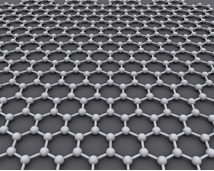 To the growing pool of companies making and selling some form of graphene, "products " may refer to raw graphene, graphene-based materials, and graphene-enhanced products, including ones headed to retail stores. In addition, an intense wave of research activity is directed at exploiting graphene's outstanding electronic, mechanical and other properties in future products and applications." For instance, graphene films less than 5nm thick are made by various chemical vapor deposition (CVD) methods. "The films can be isolated from thin graphite flakes by successively splitting the flakes apart with adhesive tape."
This article describes various commercial applications such as energy storage, graphene-based printed circuits, security packaging systems, and graphene-polymer composites. Byung Hee Hong, a chemistry professor at Seoul National University, in South Korea, says that "these developments 'are a nice start, but we're just at the beginning."
Source: Read the full article...
|
|
Developing Green Technology
|
From UConn Today (University of Connecticut), October 17, 2011, by Andrew Sparks: "Researchers in the School of Engineering are working with the U.S. Department of Energy to develop advanced coatings for a new energy-producing turbine that produces dramatically lower greenhouse gas emissions than traditional turbines.
UConn is one of nine universities chosen to conduct advanced turbine technology research for the clean and efficient operation of turbines using fuels derived from coal and containing high amounts of hydrogen, according to a U.S. Department of Energy announcement. These high-hydrogen-content fuels are crucial to developing advanced coal-based power generation systems that can capture and store carbon dioxide, a major greenhouse gas.
The UConn School of Engineering plans to use the DOE grant to 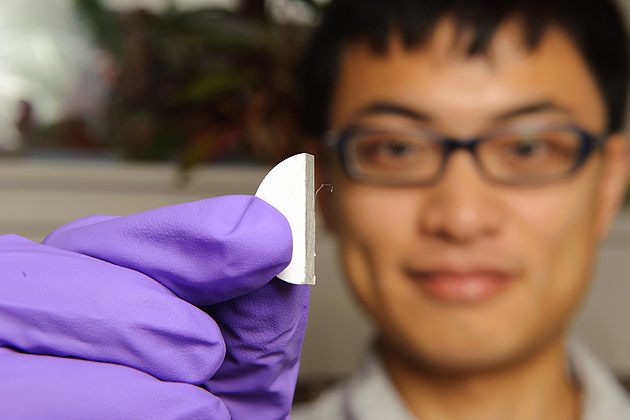 continue its groundbreaking research into the development of advanced thermal barrier coatings for turbine engines using a novel process called "solution precursor plasma spray" technology or SPPS. This process allows for the creation of a unique thermal barrier coating microstructure that dramatically reduces damage from the intense heat found in gas turbines. UConn researchers believe that the coatings developed through the SPPS process are superior to traditional powder coatings applied to turbine engine parts and can withstand more intense heat and strain." continue its groundbreaking research into the development of advanced thermal barrier coatings for turbine engines using a novel process called "solution precursor plasma spray" technology or SPPS. This process allows for the creation of a unique thermal barrier coating microstructure that dramatically reduces damage from the intense heat found in gas turbines. UConn researchers believe that the coatings developed through the SPPS process are superior to traditional powder coatings applied to turbine engine parts and can withstand more intense heat and strain."
Source: Read the full article...
|
|
From Darkness Comes Light (What Lies Ahead for the Dynamic Glazing Market?)
|
From USGlass, Metal and Glazing Magazine, November 2011, by Sahely Mukerji: : "If recent mergers and joint endeavors are any indication, the dynamic glazing market promises to be one of the greatest glass industry growth areas. While Saint-Gobain of France acquired 50 percent equity stake in Sage Electrochromic in Faribault, Minn., in November 2010, PPG Industries in Pittsburgh formed a marketing alliance with Pleotint in West Olive, Mich., in September 2011.
 Even though the playing field is expanding, there still aren't many projects using the technology just yet. A May Inc. magazine article ion dynamic glazing and smart windows featured "four promising businesses vying for the market" - Sage Electrochromics; Pleotint' Soladigm in Milpitas, Calif,; and Switch Materials in Vancouver, B.C. - and stated that other than Sage and Pleotint, the other companies reported zero installations. While other companies produce dynamic glass beyond the four in the article, there are reasons the number of installations remains low in North America." Even though the playing field is expanding, there still aren't many projects using the technology just yet. A May Inc. magazine article ion dynamic glazing and smart windows featured "four promising businesses vying for the market" - Sage Electrochromics; Pleotint' Soladigm in Milpitas, Calif,; and Switch Materials in Vancouver, B.C. - and stated that other than Sage and Pleotint, the other companies reported zero installations. While other companies produce dynamic glass beyond the four in the article, there are reasons the number of installations remains low in North America."
The article describes lack of awareness of dynamic glazing, inability to meet certain industry specifications, and the need to dynamic glazing to be evaluated as part of holistic building design.
Source: Read the full article...
|
|
In-Situ Plasma Synthesis and Deposition Platform for Energy Storage Devices
|
From International Thermal Spray & Surface Engineering (iTSSe) Newsletter, November-December 2011, pp. 63-64 of Advanced Materials & Processes Magazine, by Mohanty Pravansu: "The conventional process for fabricating electrodes used in high energy density storage devices is a multistep procedure. The overall effort is a time intensive and expensive procedure. The polymer binders used in these electrodes also limit the operating temperature range of devices which prevents the use of these devices in many applications.
To address these issues, the Additive Manufacturing Process Laboratory of the University of Michigan-Dearborn developed a plasma/laser in-situ synthesis and deposition technology, which offers a high speed, cost effective and scalable 'platform' approach to the synthesis of supercapacitor components, battery components and novel Li-ion cell architectures. This technology platform directly converts precursor solutions into consolidated films to dramatically reduce the production time and manufacturing cost of Li-Ion batteries and supercapacitors. Inexpensive chemical precursors are used to form the active films directly on the current collectors, thereby eliminating the need for polymer binder, the necessity for handling and treating nanopowders, and the need for the off-site powder manufacturing facilities found in the industry today."
Source: Read the full article...
|
|
Dynamic Glass Offers Growing Revenue Stream
|
From Glass Magazine, October 31, 2011: "Driven in large part by the green building movement, the dynamic glass market will grow 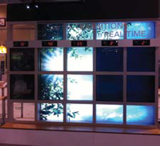 substantially over the next several years, with electrochromic glass revenues hitting the billion-dollar mark in 2017, according to a new report from Nanomarkets. Thermochromic glass revenues also will increase dramatically, climbing from $30 million in 2011 to nearly $197 million by 2017, the report states." substantially over the next several years, with electrochromic glass revenues hitting the billion-dollar mark in 2017, according to a new report from Nanomarkets. Thermochromic glass revenues also will increase dramatically, climbing from $30 million in 2011 to nearly $197 million by 2017, the report states."
Source: Read the full article...
|
|
Northwestern Researchers Advance Li-ion Batteries with Graphene-Silicon Sandwich
|
From ElectroIQ: "A team of engineers from Northwestern University has created an electrode for lithium-ion batteries that allows the batteries to hold a charge up to 10 times greater than current technology. Batteries with the new electrode also can charge 10 times faster than current batteries.
The researchers combined two chemical engineering approaches to address two major battery limitations -- energy capacity and charge rate -- in one fell swoop. In addition to better batteries for cellphones and iPods, the technology could pave the way for more efficient, smaller batteries for electric cars. The technology could be seen in the marketplace in the next three to five years, the researchers said. A paper describing the research is published by the journal Advanced Energy Materials. "We have found a way to extend a new lithium-ion battery's charge life by 10 times," said Harold H. Kung, lead author of the paper. "Even after 150 charges, which would be one year or more of operation, the battery is still five times more effective than lithium-ion batteries on the market today."
Source: Read the full article...
|
|
Zinc Oxide Micro- and Nanostructures as Multifunctional Materials
|
From SPIE Newsroom, December 5, 2011, by Sabastian Wille, et al.: "Zinc oxide (ZnO) is emerging as a useful multifunctional material due to its toughness, but it has the drawback that it is also very brittle. This brittleness can be overcome by incorporating ZnO nanostructures into polymer matrices to produce materials such as heavy-duty lacquers. However, ZnO also has special sensing, photocatalytic, and antiviral behavior, all of which can be enhanced by forming nano- and microstructures to increase the ratio of surface area to volume.
One main problem for these applications is how to control the synthesis parameters-temperature and pressure-which affect not 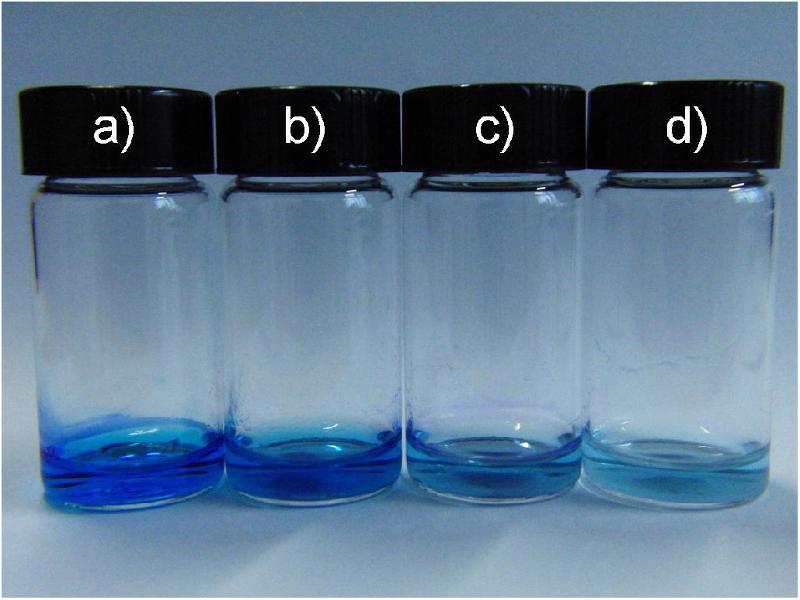 only the quantity of particles or assemblies produced but also their shape. The shape in turn influences the physical and chemical properties of the material. Depending on the parameters, different crystal-growth directions are favored during ZnO particle synthesis, facilitating formation of one of these structural variations. Now, through the use of vacuum systems, plasma sources, and optimization of carrier and reactive gases, synthesis has moved toward higher throughput. only the quantity of particles or assemblies produced but also their shape. The shape in turn influences the physical and chemical properties of the material. Depending on the parameters, different crystal-growth directions are favored during ZnO particle synthesis, facilitating formation of one of these structural variations. Now, through the use of vacuum systems, plasma sources, and optimization of carrier and reactive gases, synthesis has moved toward higher throughput.
However, for many commercial applications these methods are still too complex or too slow. For our investigation, we made ZnO tetrapod structures by two methods: sputter deposition, and an alternative, high-throughput method we have developed based on oxidation of zinc powder by heating in a furnace in air. The high-throughput method gives us the possibility to synthesize a large quantity (up to the kilogram scale) of nanostructured particles at low cost."
Source: Read the full article...
SPIE.org: https://spie.org/x83274.xml?highlight=x2400&ArticleID=x83274
Image: SPIE/S. Wille, et al.
|
|
OLED Companies Draw Closer to the Heart of the Industry
|
From Photonics Spectra, October 2011, by Lynn Savage: "Despite a consumer market wary of spending cash on high-ticket items, organic LED (OLED) makers are set for a surge in sales, which will be great  news for South Korea, the growing home of OLED manufacturing. The global market for OLEDs is expected to grow from more than $3 billion this year to almost $5.3 billion in 2016 - an annual growth rate of 11.6 percent - according to BCC Research of Wellesley, Mass." news for South Korea, the growing home of OLED manufacturing. The global market for OLEDs is expected to grow from more than $3 billion this year to almost $5.3 billion in 2016 - an annual growth rate of 11.6 percent - according to BCC Research of Wellesley, Mass."
Source: Read the full article...
Photonics Spectra: http://www.photonics.com/Article.aspx?AID=48531
Image: Photonics Spectra
|
|
Need a New Material? New Tool Can Help
|
From MIT News Office, December 20, 2011, by David L. Chandler: "Thanks to a new online toolkit developed at MIT and the Lawrence Berkeley National Laboratory, any researcher who needs to find a material with specific properties - whether it's to build a better mousetrap or a better battery - will now be able to do so far more easily than ever before.
Using a website called the Materials Project, it's now possible to explore an ever-growing database of more than 18,000 chemical compounds. The site's tools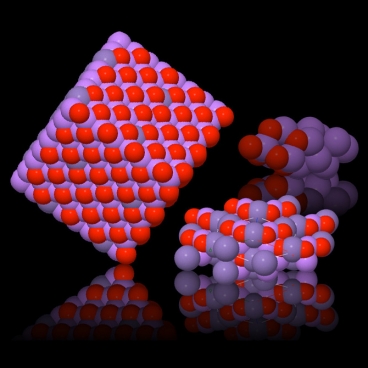 can quickly predict how two compounds will react with one another, what that composite's molecular structure will be, and how stable it would be at different temperatures and pressures. can quickly predict how two compounds will react with one another, what that composite's molecular structure will be, and how stable it would be at different temperatures and pressures.
The project is a direct outgrowth of MIT's Materials Genome Project, initiated in 2006 by Gerbrand Ceder, the Richard P. Simmons (1953) Professor of Materials Science and Engineering. The idea, he says, is that the site "would become the Google of material properties," making available data previously scattered in many different places, most of them not even searchable."
Source: Read the full article...
MIT News Office: http://web.mit.edu/newsoffice/2011/manufacturing-new-materials-1220.html
Image: MIT News Office
|
|
New Method for Enhancing Thermal Conductivity Could Cool Computer Chips, Lasers and Other Devices
|
From Vanderbilt University, December 14, 2011, by David Salisbury: "The surprising discovery of a new way to tune and enhance thermal conductivity - a basic property generally considered to be fixed for a given material - gives engineers a new tool for managing thermal effects in smart phones and computers, lasers and a number of other powered devices.
The finding was made by a group of engineers headed by Deyu Li, associate professor of mechanical engineering at Vanderbilt University, and published online in the journal Nature Nanotechnology on Dec. 11. Li and his collaborators discovered that the thermal conductivity of a pair of thin strips of material called boron nanoribbons can be enhanced by up to 45 percent depending on the process that they used to stick the two ribbons together. Although the research was conducted with boron nanoribbons, the results are generally applicable to other thin film materials."
Source: Read the full article...
Vanderbilt University: http://news.vanderbilt.edu/2011/12/thermal-conductivit/?utm_source=feedburner&utm_medium=email&utm_campaign=Feed%3A+vanderbilt-news+%28Vanderbilt+News%29
|
|
Do You Have an Interesting Article to Share?
|
Interested in sharing the latest news in vacuum coating technology? Forward us a link to an article you want to share with the rest of the SVC readership to publications@svc.org. Purchase advertising space in this newsletter by contacting SVC at 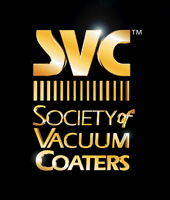 svcinfo@svc.org. svcinfo@svc.org.
Society of Vacuum Coaters
71 Pinon Hill Place NE
Albuquerque, New Mexico 87122
505-856-7188
|
|
|
|
|